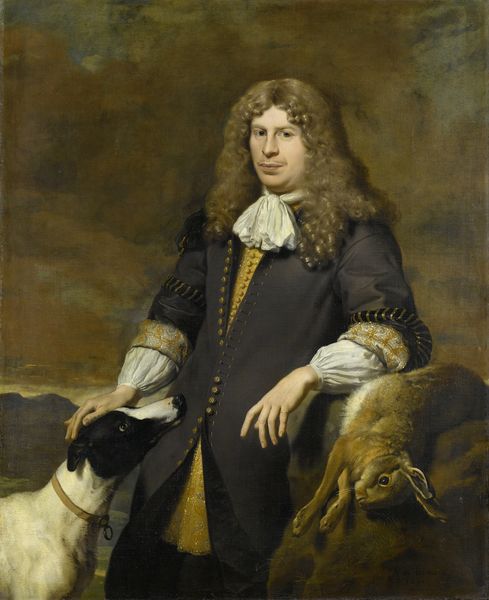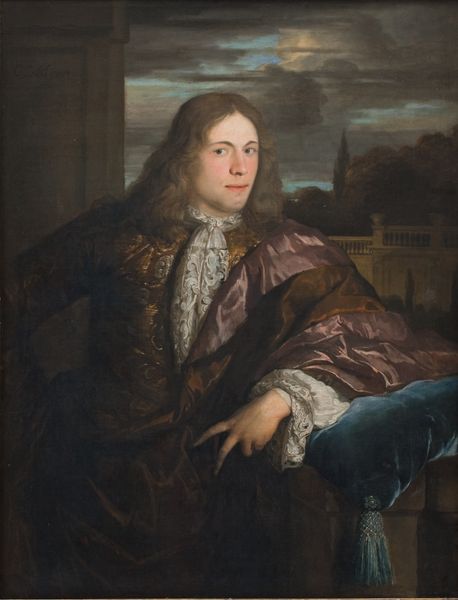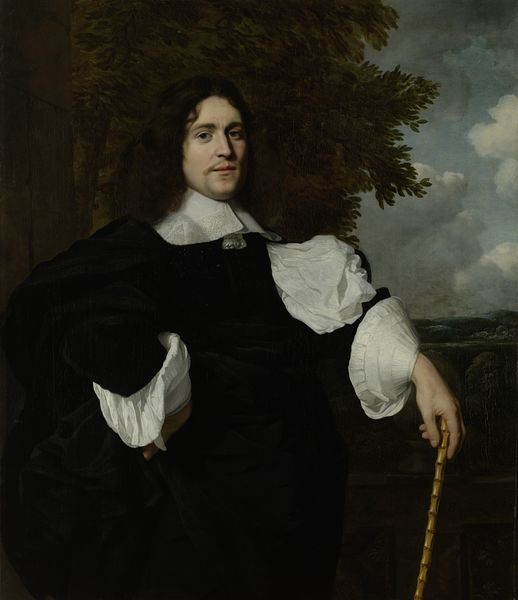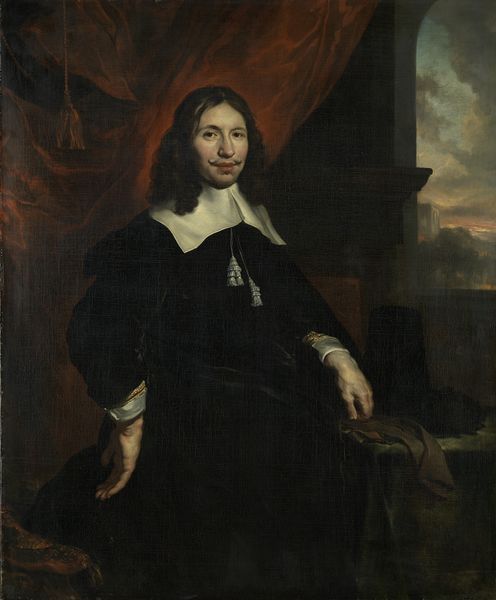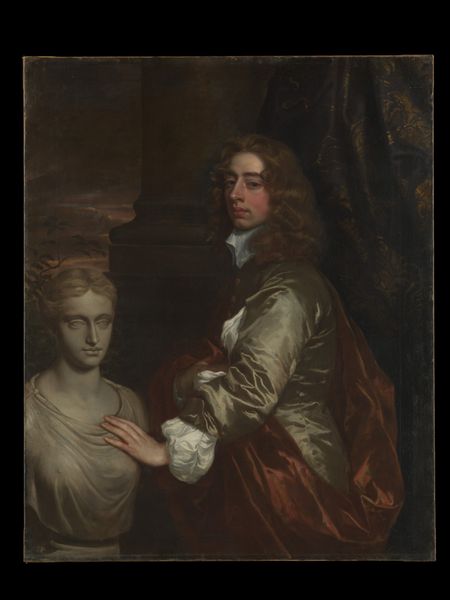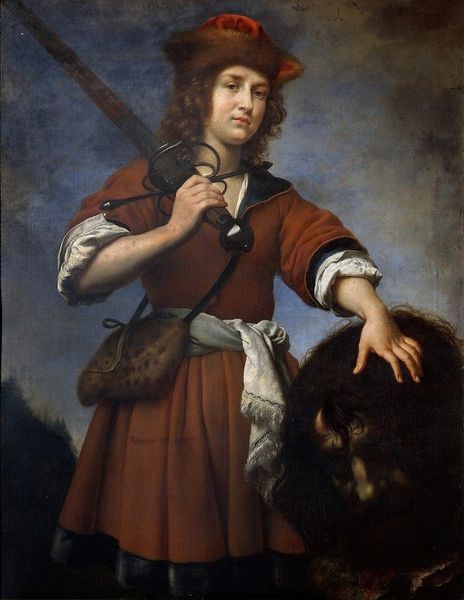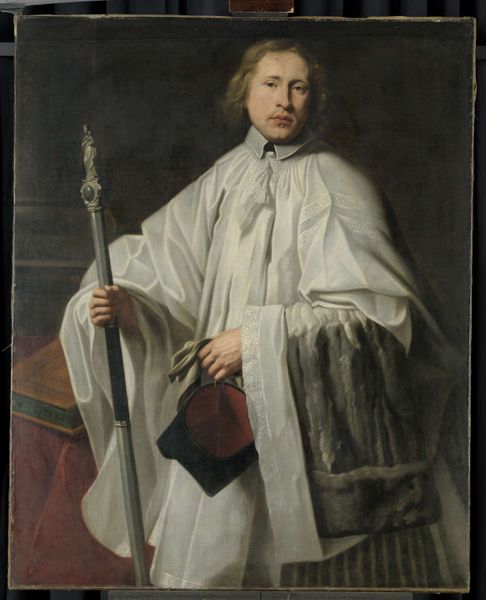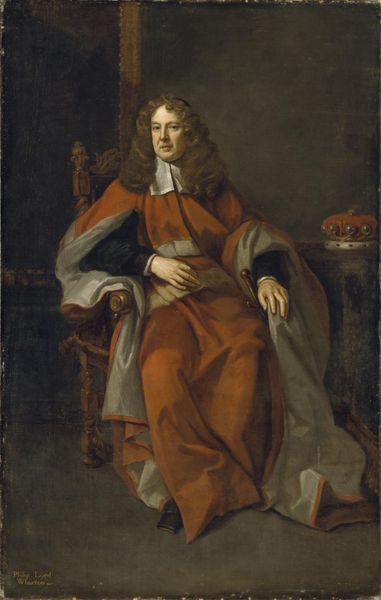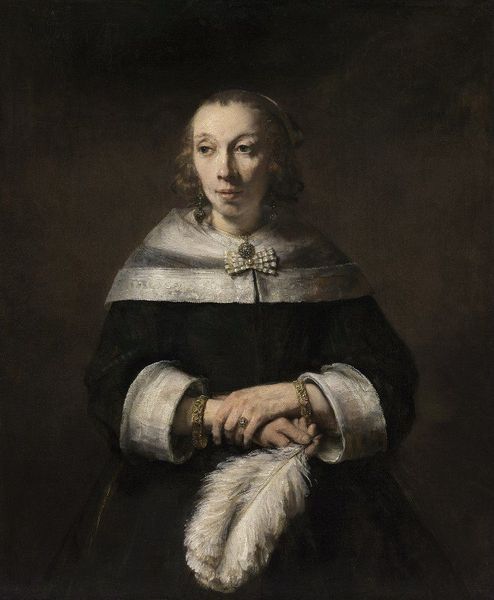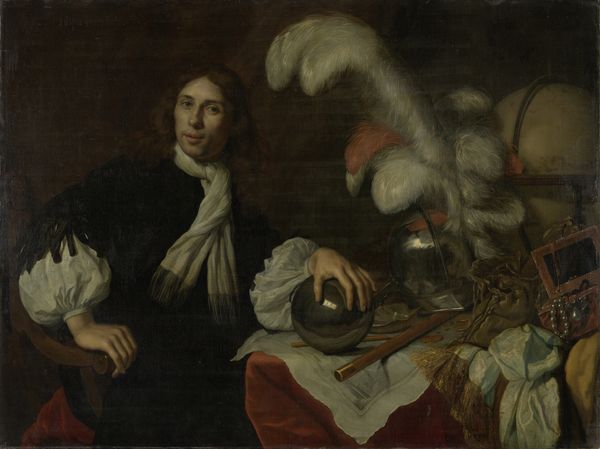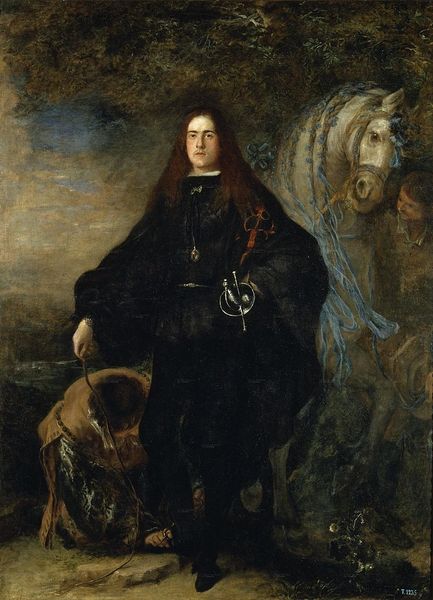
oil-paint
#
portrait
#
baroque
#
dutch-golden-age
#
oil-paint
#
landscape
#
genre-painting
#
portrait art
Dimensions: height 131 cm, width 106 cm, depth 8 cm
Copyright: Rijks Museum: Open Domain
Karel du Jardin painted this portrait of a man with oil on canvas during the Dutch Golden Age. The gentleman, accompanied by two dogs, is portrayed with the kind of self-assuredness that was becoming more common for the rising bourgeois class. Class and masculinity are visibly intertwined in the artwork. The sitter's clothing, while muted in tone, speaks to wealth and status, from the tailoring of his coat to the delicate lace at his wrists and neck. Dogs were often symbols of loyalty, companionship, and wealth, reflecting the sitter’s refined tastes and control over the natural world. The composition is interesting, the man looks to the side, as if something has caught his attention, or perhaps he is just uninterested in being painted; it creates a sense of distance from the viewer. He doesn't need your gaze. The emotional tone here is subtle but definite. It reveals the sitter's sense of himself within the social hierarchies of his time.
Comments
rijksmuseum about 2 years ago
⋮
The identity of Du Jardin’s sitter here is unknown, but this life-size portrait features a gentleman of standing, or one who professes to be. We see him during a hunt, the privilege of the nobility. His confident gaze, costly riding attire, and the hounds darting around him are a blatant display of status. Given the low vantage point, we literally look up at him.
Join the conversation
Join millions of artists and users on Artera today and experience the ultimate creative platform.
